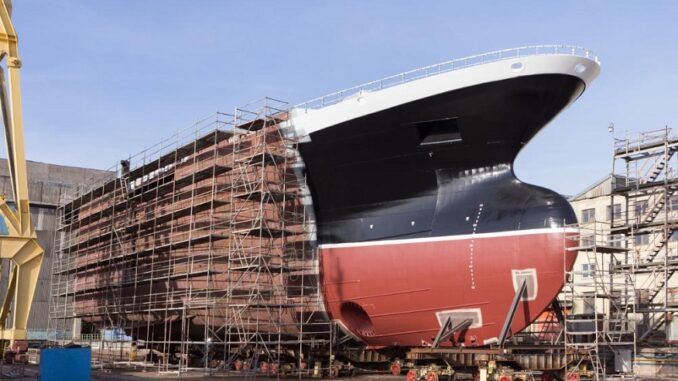
For centuries, shipbuilders primarily relied on steel and other metal alloys to construct watercraft. Nevertheless, steel’s strength comes at the cost of very high weight. Excessive vessel weight requires more powerful and fuel-hungry engines to propel ships through the waves. It also limits how much cargo ships can safely carry. To build lighter yet highly durable vessels, shipyards are increasingly turning to advanced composites – materials that blend incredibly strong reinforcing fibers with tough polymer resins. The people at Aerodine Composites explain that these materials provide similar or even superior strength compared to steel at just a fraction of the weight.
Hull Revolution
One of the biggest areas impacted by composite materials is hull construction. Hulls made from fiber-reinforced plastics like glass or carbon fiber composites can reduce overall ship weight by up to 30% versus steel. This slashes fuel consumption while extending range and boosting cargo capacity. Composites also provide better resistance against corrosion from salt water compared to metal.
Internal Strength
While hulls make up a ship’s exterior, robust internal structures are needed to prevent catastrophic rupturing from the immense forces of rolling waves and speeding water. Many shipbuilders use composite materials like Kevlar aramid honeycomb cores reinforced with carbon fiber face-sheets to produce incredibly strong yet lightweight bulkheads, decks, and girders for the ship’s skeleton. Kevlar’s high strength-to-weight ratio also makes it ideal for cable reinforcement.
Stealthy Silence
For stealth military vessels like submarines, advanced composite materials offer unique advantages over steel beyond just weight savings. Polymer composites with low metal content produce far weaker magnetic, electromagnetic, and acoustic signatures that could give away a sub’s position. Their lower density and sound transmission also make composite hulls inherently stealthier and harder to detect compared to metal hulls ringing with each ocean swell.
Need for Speed
Zooming swiftly across the water’s surface requires advanced hydrodynamic designs with sleek foils and propulsion systems. Achieving high speeds also generates tremendous physical stresses on the vessel. Many racing sailboats, high-speed ferries and military patrol craft utilize composite materials like aramid fiber laminates to construct sturdy foils, sails, propellers, and drive shafts able to withstand those punishing forces.
Fire Safety
Normally, composites have a major disadvantage over steel and aluminum – poor fire and heat resistance. This makes them ill-suited for ships’ interior structural components, furnishings and piping that could become exposed to burning materials during an onboard fire. To remedy this, shipbuilders now utilize advanced fire-hardened composites made from materials like phenolic resins, aramid fibers and intumescent coatings designed to resist flame spread and maintain structural integrity during fires.
Environment Friendly
In today’s eco-conscious society, sustainability concerns play a growing role in shipbuilding decisions. Aluminum and steel production results in heavy environmental impacts from energy-intensive smelting, mining waste, and greenhouse gas emissions. Comparatively, many composite materials utilize far less energy to produce while being partially or fully derived from renewable plant-based sources. Leading composite makers have robust recycling programs to recover and repurpose production scrap.
Self-Repair Potential
While composites are tough, impacts or excessive stress can still potentially cause internal micro-cracks and delamination within the material over time. This could lead to eventual structural failures if the damage goes undetected and unrepaired. Some researchers are looking at embedding capillary networks or vascular “channels” within composites that could automatically release resin to fill and self-heal any cracks before they spread. Self-repairing composites could save shipyards significant maintenance and repair costs down the road.
Conclusion
Though the shipping industry is known for its long-standing traditions, innovation remains key to evolving for the future. As material science and manufacturing processes continue advancing, composites will undoubtedly help unlock fresh naval designs and capabilities previously thought impossible.

Leave a Reply
You must be logged in to post a comment.